
Mickey Rooney was an American actor, producer, radio entertainer, and vaudevillian. In a career spanning nearly nine decades, he appeared in more than 300 films and was among the last surviving stars of the silent-film era. He was the top box-office attraction from 1939 to 1941, and one of the best-paid actors of that era. At the height of a career marked by declines and comebacks, Rooney performed the role of Andy Hardy in a series of 16 films in the 1930s and 1940s that epitomized mainstream United States self-image.
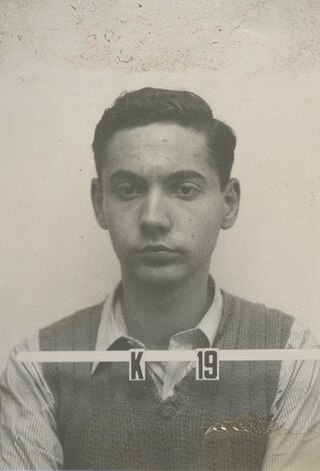
Theodore Alvin Hall was an American physicist and an atomic spy for the Soviet Union, who, during his work on United States efforts to develop the first and second atomic bombs during World War II, gave a detailed description of the "Fat Man" plutonium bomb, and of several processes for purifying plutonium, to Soviet intelligence. His brother, Edward N. Hall, was a rocket scientist who led the U.S. Air Force's program to develop an intercontinental ballistic missile, personally designing the Minuteman missile and convincing the Pentagon and President Eisenhower to adopt it as a key part of the nation's strategic nuclear triad.

Them! is a 1954 American black-and-white science fiction monster film from Warner Bros. Pictures, produced by David Weisbart, directed by Gordon Douglas, and starring James Whitmore, Edmund Gwenn, Joan Weldon, and James Arness. The film is based on an original story treatment by George Worthing Yates, which was then developed into a screenplay by Ted Sherdeman and adaptation by Russell Hughes.
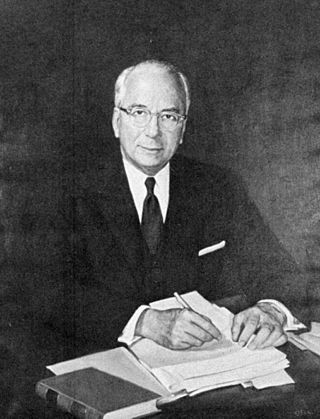
Lewis Lichtenstein Strauss was an American government official, businessman, philanthropist, and naval officer. He was one of the original members of the U.S. Atomic Energy Commission (AEC) in 1946, and he served as the commission's chairman in the 1950s. Strauss was a major figure in the development of nuclear weapons after World War II, nuclear energy policy, and nuclear power in the United States.
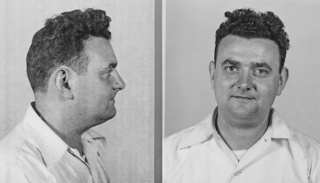
David Greenglass was an American machinist and atomic spy for the Soviet Union who worked on the Manhattan Project. He was briefly stationed at the Clinton Engineer Works uranium enrichment facility at Oak Ridge, Tennessee, and then worked at the Los Alamos Laboratory in New Mexico from August 1944 until February 1946.

Since their public debut in August 1945, nuclear weapons and their potential effects have been a recurring motif in popular culture, to the extent that the decades of the Cold War are often referred to as the "atomic age".

The House on 92nd Street is a 1945 black-and-white American spy film directed by Henry Hathaway. The movie, shot mostly in New York City, was released shortly after the end of World War II. The House on 92nd Street was made with the full cooperation of the Federal Bureau of Investigation (FBI), whose director, J. Edgar Hoover, appears during the introductory montage. The FBI agents shown in Washington, D.C. were played by actual agents. The film's semidocumentary style inspired other films, including The Naked City and Boomerang.
Hal E. Chester, was an American film producer, writer, director, and former juvenile actor.
The Flying Saucer is a 1950 independently made American black-and-white science fiction spy film drama. It was written by Howard Irving Young, from an original story by Mikel Conrad, who also produced, directed, and stars with Pat Garrison and Hantz von Teuffen. The film was first distributed in the U.S. by Film Classics and later re-released in 1953 by Realart Pictures, on a double-bill with Atomic Monster.

Atomic spies or atom spies were people in the United States, the United Kingdom, and Canada who are known to have illicitly given information about nuclear weapons production or design to the Soviet Union during World War II and the early Cold War. Exactly what was given, and whether everyone on the list gave it, are still matters of some scholarly dispute. In some cases, some of the arrested suspects or government witnesses had given strong testimonies or confessions which they recanted later or said were fabricated. Their work constitutes the most publicly well-known and well-documented case of nuclear espionage in the history of nuclear weapons. At the same time, numerous nuclear scientists wanted to share the information with the world scientific community, but this proposal was firmly quashed by the United States government. It is worth noting that many scientists who worked on the Manhattan Project were deeply conflicted about the ethical implications of their work, and some were actively opposed to the use of nuclear weapons.

Return of the Fly is a 1959 American horror science-fiction film and sequel to The Fly (1958). It is the second installment in The Fly film series. It was released in 1959 as a double feature with The Alligator People. It was directed by Edward Bernds. Unlike the previous film, Return of the Fly was shot in black and white.
Leslie Herbert Martinson was an American television and film director.

Killers from Space is a 1954 American independent science fiction film produced and directed by W. Lee Wilder, and starring Peter Graves, Barbara Bestar, Frank Gerstle, James Seay, and Steve Pendleton. Shot in black-and-white, the film originated as a commissioned screenplay from Wilder's son Myles Wilder and their regular collaborator William Raynor.
Elaine Devry was an American actress.

The Last Time I Saw Archie is a 1961 comedy film set in the waning days of World War II. Robert Mitchum stars as Arch Hall Sr., a lazy, scheming American in the Civilian Pilot Training Program, an aviation school for pilots too old to fly aircraft but not too old to fly military gliders and liaison aircraft. Jack Webb produced, directed and costarred.
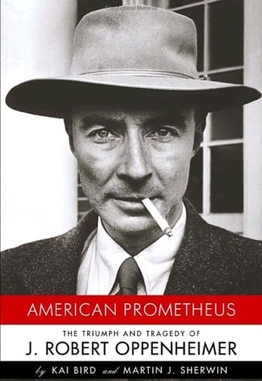
American Prometheus: The Triumph and Tragedy of J. Robert Oppenheimer is a 2005 biography of theoretical physicist J. Robert Oppenheimer, the leader of the Manhattan Project which produced the first nuclear weapons, written by Kai Bird and Martin J. Sherwin over a period of 25 years. It won numerous awards, including the 2006 Pulitzer Prize for Biography or Autobiography.
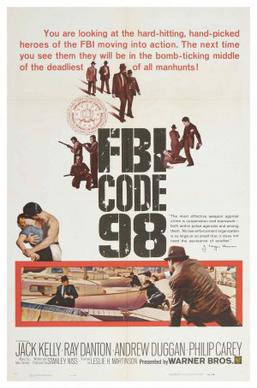
FBI Code 98 is a 1962 crime drama directed by Leslie H. Martinson and produced by Warner Bros. Originally intended as television pilot, the film was instead released theatrically in the United Kingdom in 1962, and in the United States in 1963. FBI Code 98 stars many Warner Bros. contract players such as Jack Kelly, Ray Danton, Andrew Duggan and William Reynolds who later costarred on the Warner Bros Television show The F.B.I.. The film was narrated by William Woodson, who had previously narrated the radio show The FBI in Peace and War.

The Oppenheimer security hearing conducted by the United States Atomic Energy Commission (AEC) over four weeks in 1954 explored the background, actions, and associations of J. Robert Oppenheimer, the American scientist who directed the Los Alamos Laboratory during World War II as part of the Manhattan Project to develop the atomic bomb. The hearing resulted in Oppenheimer's Q clearance being revoked. This marked the end of his formal relationship with the government of the United States, and generated considerable controversy regarding whether the treatment of Oppenheimer was fair, or whether it was an expression of anti-communist McCarthyism.

Mark Felt: The Man Who Brought Down the White House is a 2017 American biographical political thriller film written and directed by Peter Landesman, and based on the 2006 autobiography of FBI agent Mark Felt, written with John O'Connor. The film depicts how Felt became the anonymous source nicknamed "Deep Throat" for reporters Bob Woodward and Carl Bernstein and helped them in their investigation of the Watergate scandal, which resulted in the resignation of President Richard Nixon.

Most Dangerous Man Alive is a 1961 black-and-white American science fiction film, produced by Benedict Bogeaus, directed by Allan Dwan, that stars Ron Randell, Debra Paget, and Elaine Stewart. The film was distributed by Columbia Pictures.
















